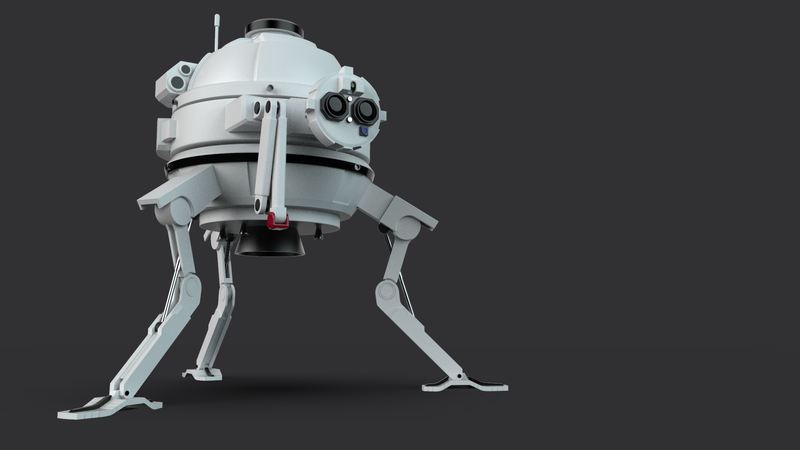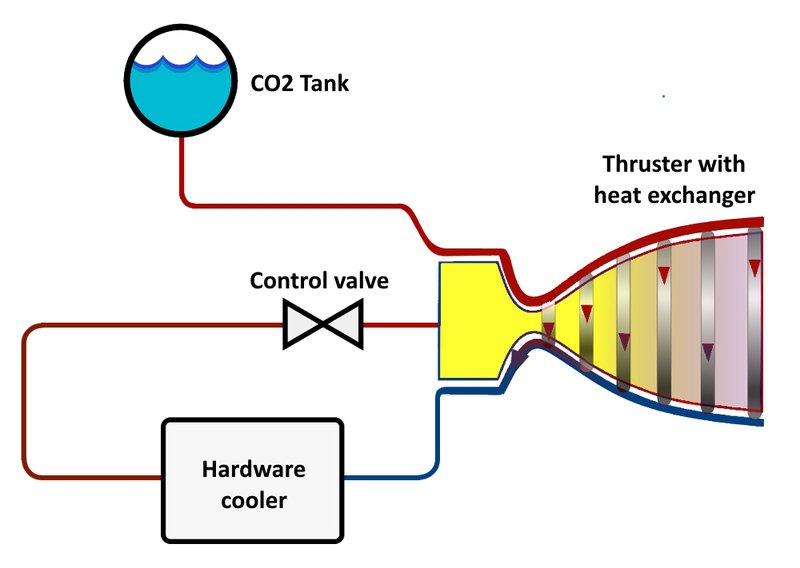EVO-Space | Design by Nature
Team Updates












Link to presentation
Consumption of electricity and operational time
Developing an autonomous free-flyer, for us also means minimizing the communication with the spacecraft or Earth while performing the necessary inspections. In order to maximize the autonomous character of the free-flyer we decided on local image processing and analysis. By this we mean that the flyer is going to inspect the spacecraft, analyze the data, define the flight path and other operations crucial for the inspection of the spacecraft, and it will send only the most essential data to the engineering teams down on earth or the astronauts aboard the spacecraft.
Following that conclusion there is a need of determining the electric power consumption of the hardware and other sensors, so that we can determine what the expected operational time of the flyer should be. First we are going to start off by listing the power of all the consumers:
- Top end Intel CPU: 130-150W
- High end motherboard: 45-80W
- RAM: 10-15W
- Hard drive: 6-9W
- 2x 50MP High resolution camera: 500W
In order to optimize the power consumption, the flyer saves only the data that it suspects is damaged instead of all the data it captures.
*In the power consumption calculations the electricity consumption of the 3D laser, thermal camera, and ultrasound head will be ignored because they are not operational all the time, and are activated only when needed. In the optimal scenario for the spacecraft
The total power of the consumers mentioned above is 754W in total, for precaution we are going to use 1000W of power in regular use which is going to be sufficient for covering all the power that the control valves and similar mechanisms are going to use. This in turn is about 1KWh of energy used every hour. Setting a goal for an operational time of about 3 hours we are going to need upwards of 3000KWh. To achieve this we are going to use lithium ion batteries.
The specific energy density of the commonly used Li-ion batteries ranges from 100-265Wh/kg. We are going to estimate that the energy density of the batteries used in our flyer is about 250Wh/kg. That means that roughly 12kg of batteries are going to be needed. If we take into account what the characteristics of the batteries, especially the drop of capacity over time, and the methods that prevent that, we would end up with around 15kg of weight in batteries.
While landing the flyer uses significant amounts of the CO2 which basically means that landing the flyer on the spacecraft would not impact the electric power consumption in any significant way.
To conclude, with a Li-ion battery of about 15kg the flyer would have enough electric power for a 2.5-3 hour inspection of the spacecraft without recharging, which, in relation to the suggested movement speed should be enough to inspect a most, if not all surfaces on the International Space Station.
REFERENCES
Batteries
- https://en.wikipedia.org/wiki/Lithium-ion_battery
- http://energystorage.org/energy-storage/storage-te...
- https://www.nasa.gov/missions/deepspace/Mars_batte...
- https://en.wikipedia.org/wiki/Flow_battery
- http://www.chem.gla.ac.uk/cronin/media/papers/Chen...
- https://www.researchgate.net/publication/326996241...
- https://www.nature.com/articles/s41557-018-0109-5
- https://interestingengineering.com/new-liquid-batt...
- https://spectrum.ieee.org/energywise/energy/renewa...
Maneuvering
- https://en.wikipedia.org/wiki/Spacecraft_propulsio...
- https://www.engineeringtoolbox.com/carbon-dioxide-...
- https://www.airspacemag.com/multimedia/how-things-...
- https://en.wikipedia.org/wiki/Draco_(rocket_engine_family)
- https://en.wikipedia.org/wiki/Control_moment_gyros...
- https://en.wikipedia.org/wiki/SpaceX_rocket_engine...
- https://www.quora.com/How-does-a-momentum-wheel-st...
- https://en.wikipedia.org/wiki/Reaction_wheel
- https://en.wikipedia.org/wiki/Attitude_control#Typ...
- https://space.stackexchange.com/questions/867/how-...
- Mehanika na fluidite, Tomislav Bundalevski
Imaging and scanning
- https://luminous-landscape.com/photography-in-spac...
- https://www.picturecorrect.com/tips/photography-in...
- https://www.slrphotographyguide.com/how-to-photogr...
- https://www.baslerweb.com/en/products/cameras/line...
- https://www.stemmer-imaging.com/en/technical-tips/...
- https://en.wikipedia.org/wiki/Photogrammetry
- https://www.laserdesign.com/what-is-3d-scanning
- https://www.sciencedirect.com/science/article/pii/...
- https://en.wikipedia.org/wiki/Ultrasonic_testing
- https://www.ndt.net/article/wcndt00/papers/idn288/...
- https://www.nasa.gov/mission_pages/station/researc...
- http://www.collectspace.com/ubb/Forum30/HTML/00134...
- https://www.airspacemag.com/space/orbital-inspecto...
- https://www.vitronic.com/industrial-and-logistics-...
- https://technology.nasa.gov/patent/TOP2-128
- https://www.scantips.com/lights/fieldofview.html
- https://www.techradar.com/how-to/photography-video...
- https://www.scantips.com/lights/fieldofview.html#t...
- https://www.alliedvision.com/en/news/detail/news/h...
- https://www.vitronic.com/industrial-and-logistics-...
Patterns in nature
- https://phys.org/news/2017-05-predators-faster-pre...
- https://www.thespruce.com/how-robins-find-worms-40...
- http://www.besgroup.org/2017/04/22/pied-kingfisher...
- https://en.wikipedia.org/wiki/Pied_kingfisher#Feed...
Gecko Gripper
- http://www.sciencemag.org/news/2017/06/watch-astro...
- https://www.nasa.gov/mission_pages/station/researc...
Servicing and problems
- https://en.m.wikipedia.org/wiki/International_Spac...
- https://www.esa.int/Our_Activities/Operations/Spac...
Vision in nature
- https://www.thespruce.com/how-birds-see-color-3864...
- https://en.wikipedia.org/wiki/Eagle_eye
- https://www.owlpages.com/owls/articles.php?a=5
- http://physicsbuzz.physicscentral.com/2011/06/how-...
Reflective surfaces in nature and their use
- https://www.chemistryworld.com/news/fish-scales-ho...
- https://onlinelibrary.wiley.com/doi/abs/10.1002/ad...
- https://onlinelibrary.wiley.com/doi/abs/10.1002/ad...
- https://thesis.library.caltech.edu/2043/1/appendix...
Insulation in space
- https://hub.jhu.edu/2018/08/06/parker-solar-probe-...
- https://www.researchgate.net/figure/Aerogel-insula...
- https://www.nasa.gov/vision/earth/technologies/sil...
Motivation for thermal insulating in space
- https://en.wikipedia.org/wiki/Nautilia_profundicol...
- https://en.wikipedia.org/wiki/Alvinella_pompejana
- https://en.wikipedia.org/wiki/Tardigrade
Machine learning and AI

SpaceApps is a NASA incubator innovation program.